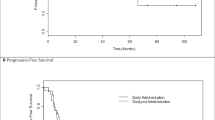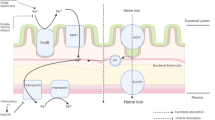Abstract
Introduction
Data on the efficacy of hydroxyurea (HU) in Indian children with sickle cell anaemia (SCA) is limited. Hence, we have evaluated the efficacy of fixed low dose HU in Indian children.
Methods
The study cohort consisted of 144 children (<18 years of age) with SCA having severe manifestations (≥3 episodes of vasocclusive crisis or blood transfusions, or having ≥1 episode of acute chest syndrome or cerebrovascular stroke or sequestration crisis) who were started on fixed low dose HU (10 mg/kg/day). They were followed up for two years and monitored for the hematological and clinical efficacy and safety.
Results
There was significant increase in the fetal hemoglobin level (HbF%), total hemoglobin and mean corpuscular volume. Vasoocclusive crises, blood transfusions, acute chest syndrome, sequestration crises and hospitalizations decreased significantly. Baseline HbF% had significant positive correlation with HbF% at 24 months. There was significant negative correlation between baseline HbF% and change in HbF% from baseline to 24 months. No significant correlation was found between HbF% at baseline and clinical event rates per year after HU. No major adverse events occurred during the study period.
Conclusion
Fixed low dose HU is effective and safe in Indian children with SCA.
Similar content being viewed by others
References
Weatherall D. The inherited disorders of haemoglobin: an increasingly neglected global health burden. Indian J Med Res. 2011;134:493–497.
Mukherjee MB, Colah RB, Ghosh K, Mohanty D, Krishnamoorthy R. Milder clinical course of sickle cell disease in patients with alpha thalassemia in the Indian subcontinent. Blood. 1997;89:732.
Mohanty D, Mukherjee MB. Sickle cell disease in India. Curr Opin Hematol. 2002;9:117–122.
Mashon RS, Dash PM, Khalko J, Dash L, Mohanty PK, Patel S, et al. Higher fetal haemoglobin concentration in patients with sickle cell disease in Eastern India reduces the frequency of painful crisis. Eur J Haematol. 2009;83:383–384.
Kar BC, Devi S. Clinical profile of sickle cell disease in Orissa. Indian J Pediatr. 1997;64:73–77.
Kinney TR, Helms RW, O’Branski EE, Ohene-Frempong K, Wang W, Daeschner C, et al. Safety of hydroxyurea in children with sickle cell anemia: results of the HUG-KIDS study, a phase I/II trial. Pediatric Hydroxyurea Group. Blood. 1999;94:1550–1554.
Steinberg MH, McCarthy WF, Castro O, Ballas SK, Armstrong FD, Smith W, et al. Investigators of the Multicenter Study of Hydroxyurea in Sickle Cell Anemia and MSH Patients’ Follow-Up. The risks and benefits of long-term use of hydroxyurea in sickle cell anemia: A 17.5 year follow-up. Am J Hematol. 2010;85:403–408.
Italia K, Jain D, Gattani S, Jijina F, Nadkarni A, Sawant P, et al. Hydroxyurea in sickle cell disease-a study of clinicopharmacological efficacy in the Indian haplotype. Blood Cells, Molecules and Diseases. 2009;42:25–31.
Singh H, Dulhani N, Kumar BN, Singh P, Tiwari P. Effective control of sickle cell disease with hydroxyurea therapy. Indian J Pharmacol. 2010;42:32–35.
Jain DL, Sarathi V, Desai S, Singh P, Tiwari P. Low fixed dose Hydroxyurea in severely affected Indian children with sickle cell disease. Hemoglobin. 2012;36:323–332.
Coleman E, Inusa B. Sickle cell anaemia: targeting the role of fetal haemoglobin in therapy. Clinical Pediatrics (Phila). 2007;46:386–391.
Zimmerman SA, Schultz WH, Davis JS, Pickens CV, Mortier NA, Howard TA, et al. Sustained long-term hematologic efficacy of hydroxyurea at maximum tolerated dose in children with sickle cell disease. Blood. 2004;103:2039–2045.
Hankins JS, Ware RE, Rogers ZR, Wynn LW, Lane PA, Scott JP, et al. Long-term hydroxyurea therapy for infants with sickle cell anemia: the HUSOFT extension study. Blood. 2005;106:2269–2275.
Patel DK, Mashon RS, Patel S, Das BS, Purohit P, Bishwal SC. Low dose hydroxyurea is effective in reducing the incidence of painful crisis and frequency of blood transfusion in sickle cell anemia patients from eastern India. Hemoglobin. 2012;36:409–420.
Svarch E, Machín S, Nieves RM, Mancia de Reyes AG, Navarrete M, Rodríguez H. Hydroxyurea treatment in children with sickle cell anemia in Central America and the Caribbean countries. Pediatr Blood Cancer. 2006;47: 111–112.
Al-Nood HA, Al-Khawlani MM, Al-Akwa A. Fetal hemoglobin response to hydroxyurea in Yemeni sickle cell disease patients. Hemoglobin. 2011;35:13–21.
Strouse JJ, Heeney MM. Hydroxyurea for the treatment of sickle cell disease: efficacy, barriers, toxicity, and management in children. Pediatr Blood Cancer. 2012;59:365–371.
Wang WC, Ware RE, Miller ST, Iyer RV, Casella JF, Minniti CP, et al; BABY HUG investigators. Hydroxycarbamide in very young children with sicklecell anaemia: a multicentre, randomised, controlled trial (BABY HUG). Lancet. 2011;377:1663–1672.
Green NS, Barral S. Genetic modifiers of HbF and response to hydroxyurea in sickle cell disease. Pediatric Blood Cancer. 2011;56:177–181.
Flanagan JM, Steward S, Howard TA, Mortier NA, Kimble AC, Aygun B, et al. Hydroxycarbamide alters erythroid gene expression in children with sickle cell anaemia. British J Haematol. 2012;157:240–248.
Ware RE, Eggleston B, Redding-Lallinger R, Wang WC, Smith-Whitley K, Daeschner C, et al. Predictors of fetal hemoglobin response in children with sickle cell anemia receiving hydroxyurea therapy. Blood. 2002;99:10–14.
Kattamis A, Lagona E, Orfanou I, Psichou F, Ladis V, Kanavakis E, et al. Clinical response and adverse events in young patients with sickle cell disease treated with hydroxyurea. Pediatric Hematology Oncology. 2004;21: 335–3342.
Ware RE. How I use hydroxyurea to treat young patients with sickle cell anemia. Blood. 2010;115:5300–5311.
Author information
Authors and Affiliations
Corresponding author
Rights and permissions
About this article
Cite this article
Jain, D.L., Apte, M., Colah, R. et al. Efficacy of fixed low dose hydroxyurea in Indian children with sickle cell anemia: A single centre experience . Indian Pediatr 50, 929–933 (2013). https://doi.org/10.1007/s13312-013-0264-0
Received:
Revised:
Accepted:
Published:
Issue Date:
DOI: https://doi.org/10.1007/s13312-013-0264-0




